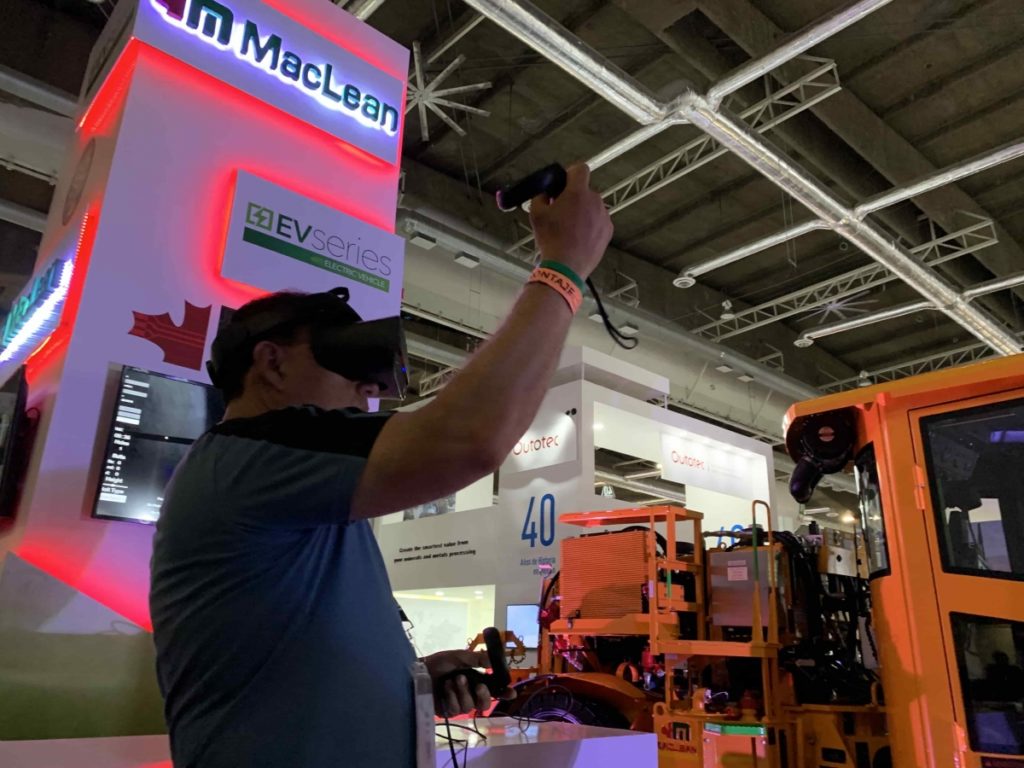Having witnessed – and benefitted from – the electrification and automation evolution going on in the underground mining industry, MacLean Engineering is also leveraging digitalisation to improve machine analysis and performance for its customers.
The Sudbury, Ontario-based company, over the last few years, set itself a target of creating a digital twin for every MacLean mining vehicle and, Stuart Lister, Vice President of Marketing & Communications, says the company is now at a point in its product development evolution where it can share some progress.
On the real-time analytics front, the company has a purpose-built vehicle monitoring system on its 15-unit fleet of battery-electric vehicles at the Newmont Goldcorp-owned Borden gold mine in northern Ontario, he said.
“This system streams real-time performance data (both tramming and application) to the cloud for remote analysis and better decision making for maintenance and operations personnel at site,” he explained.
This MacLean IntelliOp VMS package consists of sensors and display screens installed on each unit, supported by analytics software that “distils vehicle performance data” based on an OEM-level of product design knowledge, according to Lister.
“IntelliOp presents actionable data and provides prompts on the in-cab screen so that it offers up immediate benefits with regard to operator performance,” he said. “It also clears away the background noise of vehicle health telemetry by presenting this data in a way that enables predictive maintenance decision making, not bring about ‘decision overwhelm’.”
Lister said the company is also taking a “leap” to a cloud-based documentation platform for parts books and parts ordering as well as technical manuals. This online environment provides a high level of offline functionality and is where “almost real-time downloaded PDFs” can be created easily and quickly, he said.
“Our new ‘Documoto’ parts ordering portal will have the look and feel of a best-in-class consumer retail experience,” he said. The company is also able to layer on a library of training content, for example ‘how-to’ videos that MacLean thinks will be of great help to its customer base. “Going forward, we’re going to build this content out with training videos shot in our test mine,” he said.
Lister continued: “And, speaking of training, a great example of the MacLean digital twin philosophy taking shape is our development of a virtual reality (VR) bolter that offers up a digital simulation of a bolter environment within a headset.”
The company showed off this VR innovation at the CIM Convention, in Montreal, earlier this year, providing visitors with a hands-on experience of the immersive training world of virtual ground support installation.
Lister remarked: “It’s easy to transport and the technology is well known and well-liked by the coming generation of underground miners who are growing up with this type of technology as part of their day-to-day.”
MacLean also has plans to extend its VR capabilities to pre-op walkarounds and full simulator treatments for the MacLean Blockholer and MacLean Shotcrete Sprayer, it previously said.
He added: “The MacLean digital twin is indeed taking shape and, we’re just getting started.”
Next up for the company is connecting its real-time vehicle performance data and the cloud-based parts book and technical manuals repository with each unit’s maintenance history.
“The scenario is a mine’s service technician showing up at a piece of mining equipment, with a tablet that can instantly get a picture of the work that has been done to that unit, along with predictive maintenance suggestions – maintenance tasks and parts,” Lister said.
“This is just one example of how the rollout of the digital twin, if done right, could make a practical difference in underground mining. That’s why we’re devoting resources to pushing forward in this area.”











